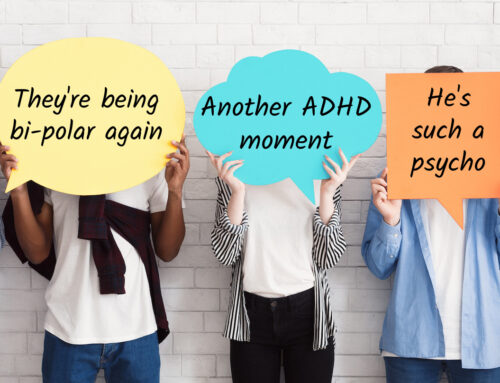At the beginning of the pandemic, most kids were a little (or a lot) jazzed up about their impromptu and indefinite vacation from the classroom. This was especially true for children for whom school was a source of negative, uncomfortable emotions — like anxiety, depression, fear, and frustration. For these kids, distance learning (whether a fully remote or a hybrid model) came with a big sigh of relief.
Vacation, however, can’t last forever. In-person learning will soon resume. What can we do for the kids who want to avoid that transition at all costs?
What is school avoidance?
School avoidance is when a child tries to minimize their time spent in school. The child may try to get out of going to school in the mornings — think: “I’m too sick!” — or get out of staying at school during the day — think: “I’m too sick!” again. While it may seem easy to brush off school avoidance as typical kid behavior, it may actually be a sign that your child’s experience of school is laced with negative emotions.
If those negative emotions become too much to handle, school avoidance can turn into school refusal, wherein a child outright refuses to go into school. Because of the word “refusal,” the act can sound purposeful or defiant. However, school refusal is anything but — it’s grounded in real, complex, and difficult to bear emotions.
What kind of emotions are we talking about, specifically?
As Georgetown Psychology’s Dr. Bryce Gold describes it, school avoidance can be rooted in anxiety or depression, can be a response to real or perceived threats (like bullying), can come from the frustration and overwhelm of learning disabilities, and these days, can be a reaction to nerves, fears, and traumas that stem from COVID.
Not every kid will be able to articulate their feelings or fears to you when asked. Sometimes, you just have to be on the lookout for less obvious signs.
What might the signs look like?
If your child complains that they shouldn’t have to go to school, refuses to go to school, or frequently asks to be brought home — these are flashing neon signs that something is off. Other signs, however, are easier to misread.
Have they stopped socializing as often? Have they expressed negativity in regards to school restarting? Have they voiced that they miss (or don’t miss) in-person school? How does your child respond when you ask them about school or their social life?
Remember that children (as well as teens, adults, and everyone) frequently display anxiety, depression, or fear through acting out or shutting down. If you notice these behaviors, trace the change in their demeanor back throughout the day — what was happening or being spoken about right before the change occured?
Dr. Gold cautions that anxiety also can show up in the form of physical discomfort.
“For example, anxiety can often show up in the form of stomach aches, nausea, diarrhea, headaches, chest pains, dizziness, shakiness, body aches,” she says. “Often kids with school-based anxiety will develop symptoms in the morning before the start of school, or throughout the school day and make requests to come home.”
If your child is a regular at the nurse’s office, Dr. Gold encourages you to reach out to and “work with a pediatrician to rule out any underlying medical causes for physical symptoms.” If the symptoms aren’t rooted in a physical diagnosis, they may indicate that something about school is triggering a psychosomatic (brain-to-body) response.
Okay, I think my kid is avoiding school. Should I let them stay home or make them go?
This one is tricky. Dr. Gold acknowledges that “while high levels of anxiety can impact availability to learning, not going to school is incredibly detrimental as it becomes reinforcing.”
So we don’t want them to miss school, but we don’t want them to stew in extreme levels of discomfort in an environment that feels unsafe, either. If this sounds like being stuck between a rock and hard place, you’re not alone. The best thing to do is follow Dr. Gold’s advice and seek treatment before this behavior snowballs.
If your child does not want to go to school, Gold’s first piece of advice is to “try to make home boring so it is less reinforcing.” Her second recommendation is to “collaborate with schools. Don’t conceal it or write sick notes.” Third, practice compassion, kindness, and patience — remember that these behaviors stem from complex feelings. Then, seek to identify the issues causing the distress. For this one, enlist the help of a trained therapist.
How can a psychologist help?
By reaching out for help, a therapist can work with your child to uncover the root of the school avoidance or refusal. This way, they can best know how to treat the underlying causes of it and make sure there are not any legitimate threats that need to be addressed first.
In addition, a psychoeducational assessment can be administered. This type of evaluation can rule out any learning struggles or differences that “often exacerbate feelings of inferiority and embarrassment when comparing oneself to their peers,” according to Dr. Gold.
Building a plan to help your child work through whatever issues stand in their way is a necessary step to getting them back in school.
“By getting them back into school,” says Gold, “the anxiety actually reduces — it’s kind of like desensitizing, which is an exposure therapy technique, in order to help someone face their anxieties head on and habituate to them to the point that they are no longer, or significantly less, bothered by them.”
Don’t forget that the transition back might be exciting, too.
Anxieties can loom so large that they become the whole picture. In these moments, remember that every situation is a balance of tension and ease. Try to spot the rays of positivity when they appear, no matter how small. Commit to not letting them slip by unnoticed — those little wins and exciting moments along the way are worth celebrating. Do so, and remember that you are not, and do not have to be, in this alone.






